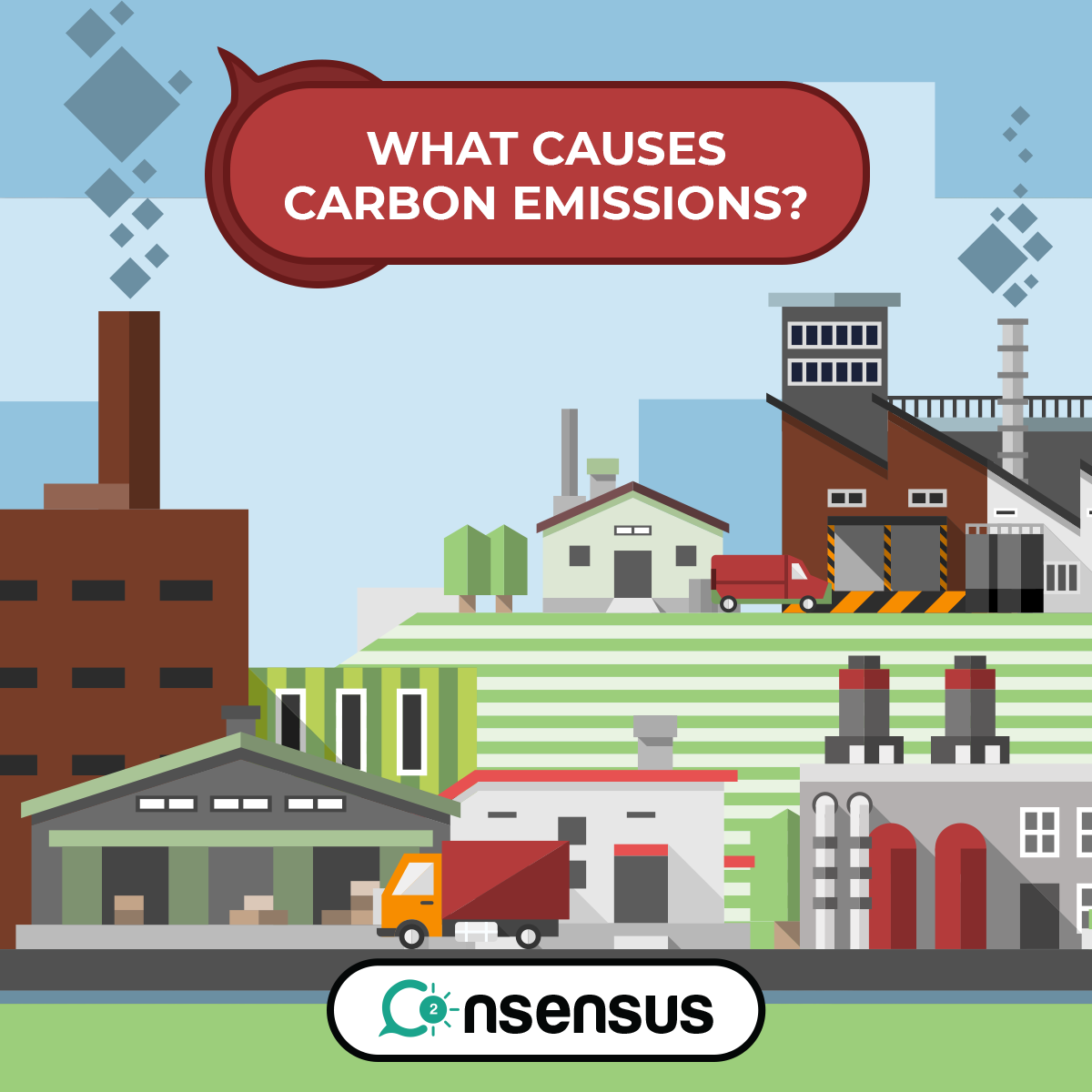Carbon emissions have increased to an alarming level.
The effects of carbon emissions are apparent to even the most ignorant person these days, as everyone knows the world has gotten hotter over the years.
After ourselves, we have only climate change to blame for this and considering that the EPA estimates 76% of greenhouse gases to be carbon emissions, it’s fair to say that a substantial part of the blame for climate change goes to carbon emissions.
But where exactly is carbon emitted from? What are the root causes of an ever-warming planet (the statistics reveal that our planet was 35% hotter in 2018 than in 1990)? We tell you all about them.
Here are the causes of carbon emissions.
1. Transportation
This point should come as no surprise to any of us, but the reason we’ve put such an obvious point at the top of this list is because of its mammoth contribution to the causes of carbon and greenhouse gas emissions. So sizable is the contribution of transportation that it onstituted 28.5% of all greenhouse gas emissions in 2016.
Cars, motorcycles, airplanes, commercial vehicles, public transportation vehicles, etc. use fossil fuels to propel them, and these fossil fuels are mined from deep within the Earth.
Because of their nature and the state of the technology that exists (most vehicles use some sort of combustion to propel themselves), a lot of waste gases, including carbon emissions, are produced.
You can help the planet to lower carbon footprint by walking or cycling instead of using your motor-vehicle. You can also help bring in a motoring revolution by making sure your next car is an EV.
Offset Your Flight’s Carbon Offset
2. Electricity Generation
Coming in at a very close second is electricity generation.
Perhaps this point isn’t as obvious as transportation (we don’t see smoke-belching exhaust pipes everywhere we go with electricity generation), but it’s still essential to any discussion about carbon emissions, as it was the cause of 28.4% of all greenhouse gas emissions in 2016.
Electricity is usually generated in thermal power plants, which generate electricity by burning coal, petroleum (or its derivatives) and other natural gases.
As is the case with transportation, the combustion of these gases is rarely complete, so a lot of waste gas ends up being produced in the process. These gases are released directly into the atmosphere, and since these gases are rich in carbon content, they contribute directly to climate change.
Governments around the world are beginning to take cognizance of the impact of electricity generation on the planet, so they’re implementing and executing plans to have most of their electricity generated via clean sources (solar, tidal energy, etc.).
Denmark, for instance, generates almost 60% of its energy demand by wind power.
3. Industrial Processes and Activities
While industrial processes undoubtedly use a lot of electricity, there is a reason why we’ve separated this point, and that’s to discuss the chemical processes industries employ to produce goods from raw materials.
All the goods and services you enjoy are directly or indirectly the result of industrial activities and processes, so it should come as no surprise that they were responsible for 14.3% of all carbon emissions (by energy consumption) and an additional 4.3% overall emissions in 2005.
Some examples of industrial activities include iron and steel production, machinery production, chemical production, etc., all of which employ specific procedures which lead to an increase in carbon emissions.
Taking cognizance of this, industrial houses have started adopting environmentally-friendly means of production to minimize their impact on the planet, but a lot still needs to be done in this regard.
Carbon Footprint Calculator for Your Business
4. Commercial and Residential Causes
Sitting at home and not doing much takes its toll on the environment as well.
Commercial and residential causes contributed to 11% of all greenhouse gas emissions in 2016.
Businesses and homes emit carbon for activities such as keeping the premises warm, disposing waste and also while using certain appliances. Everytime you use the stove, switch a light on or use the microwave, you’re mitting carbon.
Extending the point to beyond carbon emissions, refrigerators used CFCs in them, which are harmful to the ozone layer. Thankfully, they were phased out by the Montreal Protocol of 2000.
You can lower not only your carbon footprint but also your overall greenhouse gas footprint by adopting environmentally-friendly appliances and articles of daily use. For example, you could swap the fireplace for an environmentally-friendly oil heater, or swap those old, energy-guzzling bulbs for modern LEDs.
5. Agriculture
Perhaps you’d be surprised by this point, but the activity that puts food on our table isn’t actually free from environmental guilt.
Cattle-belching, soil respiration, burning waste improperly, biomass, rice cultivation, etc. have their impact on the environment. And a considerable amount of carbon is released by these activities, which probably makes the 9% contribution of agricultural activities to overall greenhouse gas emissions in 2016 not that surprising.
Conclusion
Carbon emissions, being a part of greenhouse gas emissions, are detrimental for the environment and contribute in a significant manner towards climate change and resource depletion.
If the trend of reckless usage of fossil fuels is not halted, climate change will become life-threatening.
Moreover, lobbying by industrial houses to preserve the status quo and prevent efficient technologies from emerging has also impacted the planet irreversibly.
Carbon emissions are generated from a lot of sources, and they have pretty sizeable contributions each. Little steps towards minimizing your carbon footprint will go a long way in reversing climate change.
